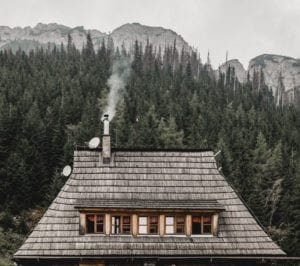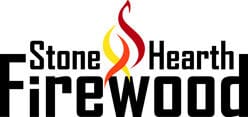There’s nothing like a live, crackling fire when the weather outside is frightful. But there’s also nothing like a smoke-filled room to put a damper on your cozy mood! Have you ever lit a fire in your wood stove or fireplace, only to panic when smoke starts to seep out and fill the room? If so – you probably wondered where you went wrong. Using wood heat effectively can seem a little tricky, but we’ll introduce you to some wood-burning secrets and tips that will help you get the most out of your wood stove and avoid those smoky situations.

-
Burn the Correct Wood
Fast-burning wood - like pine - is great to use for kindling, but not so great to use as your regular firewood. While they do put out a lot of heat, these logs burn up fast, and you’ll continuously have to refill your stove to keep it from going out. Instead, burn hardwoods like oak, maple, or ash to get a steady, long-lasting heat. Never burn green wood (wood that’s been freshly cut or hasn’t yet dried for at least 6 months) because you’ll get creosote buildup in your flue, which can cause chimney fires and other problems. Instead, burn seasoned firewood (wood that’s been dried for at least 6 months) or kiln-dried firewood.
BONUS TIP: Have a professional inspect and clean your flue once a year to remove creosote and soot buildup. -
Start Small
When setting up your tinder, kindling, and logs, don’t try to pack the fireplace full before you start it. If you light a large fire right from the start, the smoke is likely to drift into the room, because your pipe flue isn’t hot enough to help draw smoke from the stove. Instead, start small with kindling and maybe one larger log. This will create a draft, which will draw smoke up the chimney. After about 10 minutes, the flue will be hot, and you can start adding larger logs to the fire.
-
Use the Damper to Control Heat
As you probably already know, fire feeds on oxygen. What you may not already know is your stove has a damper whose job it is to control the amount of air you’re letting in to feed the fire. Depending on how far open or shut you have the damper, your fire will be smaller and cooler (and burn for longer), or larger and hotter (and burn more quickly). The damper is usually located at the bottom of the stove. You’ll probably need the damper open wider when lighting your fire so you can get the fire off to a good start. Once you do have a roaring blaze though, you’ll want to close this part or almost all the way (leave just a crack) depending on how hot you want your fire. Some stoves also have an inline damper on the pipe or flue that exits the stove. Keep this completely open when first lighting the stove. As with the main damper on your stove, you can partially close this once the firebox is hot.
-
Cooking and Baking with a Wood-Fired Stove
 A lot of old wood burning stoves and their modern replicas can be used to cook and bake. If you’re off the grid, cooking with a wood stove might be your only option! First, light a hot fire and let it burn for 15-20 minutes to preheat the burners or oven unit. After the preheating is done, add slow-burning hardwoods like oak and maple, and damper the airflow to provide consistent heat to the oven box and burners.
A lot of old wood burning stoves and their modern replicas can be used to cook and bake. If you’re off the grid, cooking with a wood stove might be your only option! First, light a hot fire and let it burn for 15-20 minutes to preheat the burners or oven unit. After the preheating is done, add slow-burning hardwoods like oak and maple, and damper the airflow to provide consistent heat to the oven box and burners. -
When the Stove Isn't Being Used
Be sure to close the inline damper and intake damper when you don’t have a fire burning in your stove. If you leave the dampers open, the stove pipe can draw heat up and out of your house, significantly reducing your home’s energy efficiency.
We hope these little wood-burning secrets and tips will help you get the most out of your wood stove or fireplace! If you know someone who’s new to the wood-burning world, don’t forget to share this with them to make their life a little easier.
